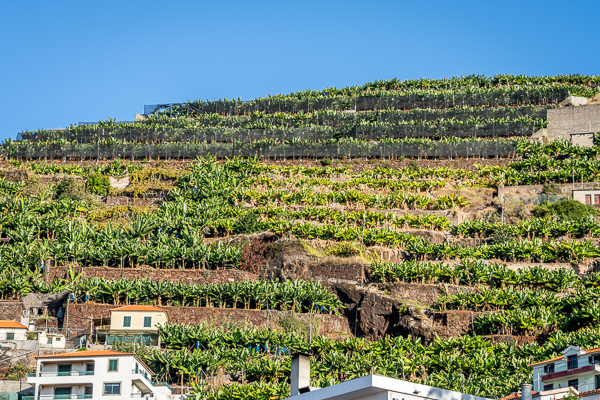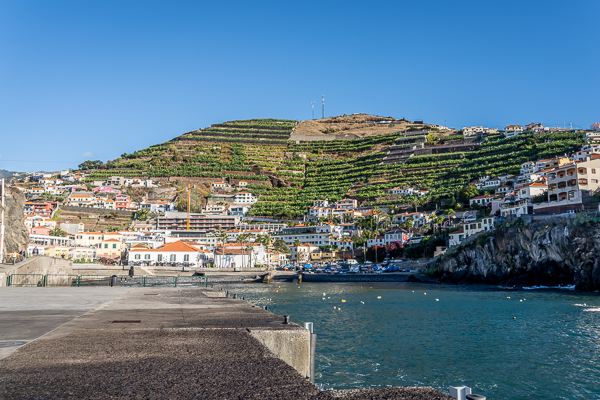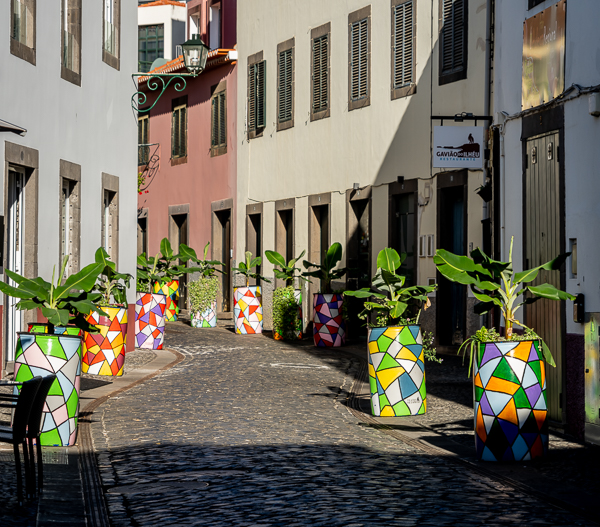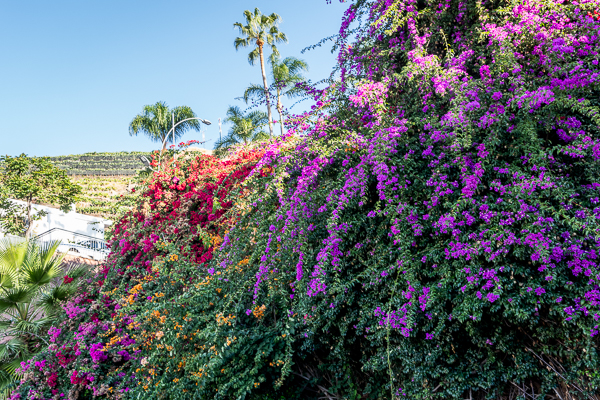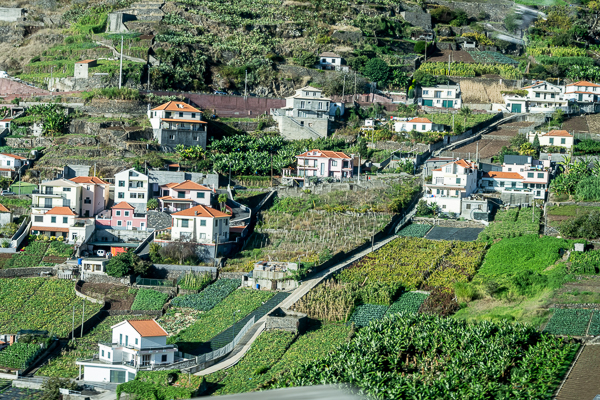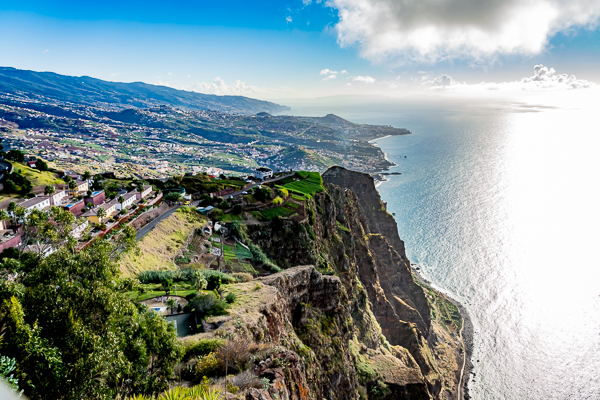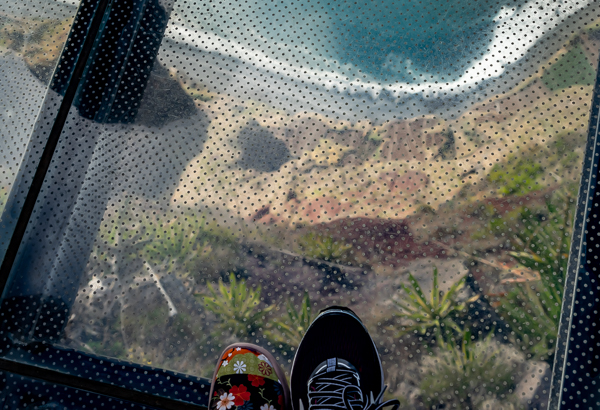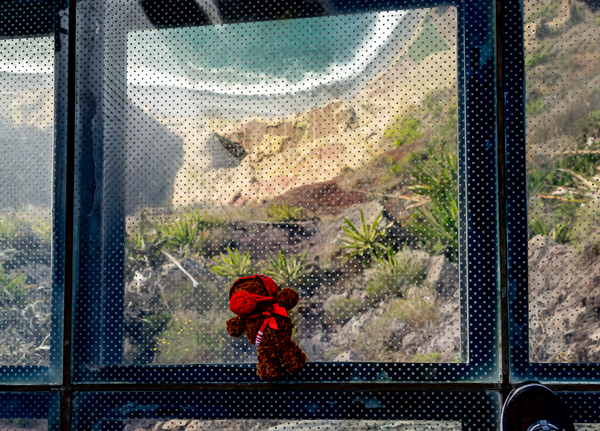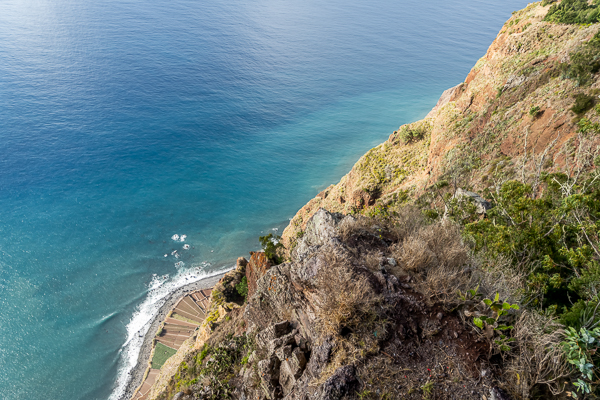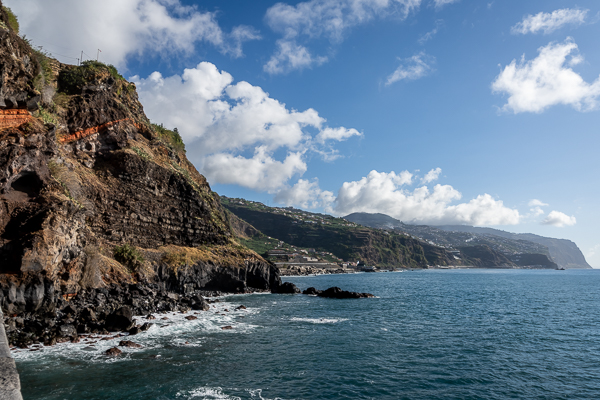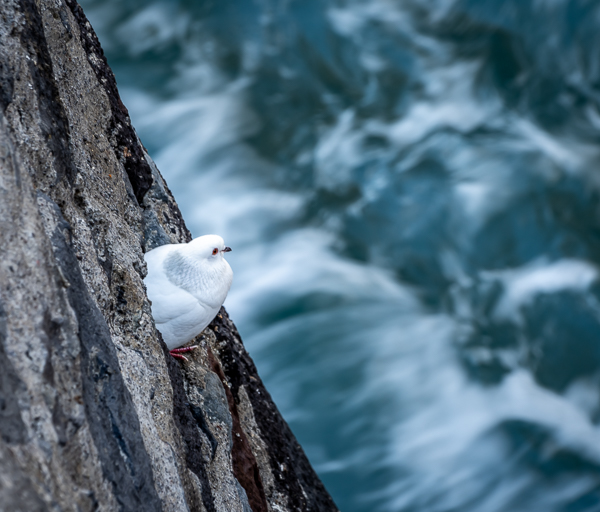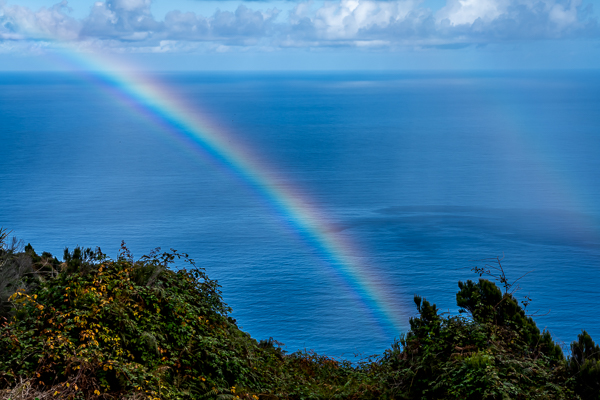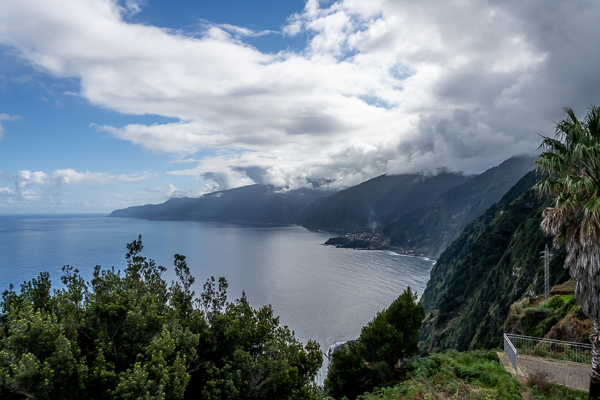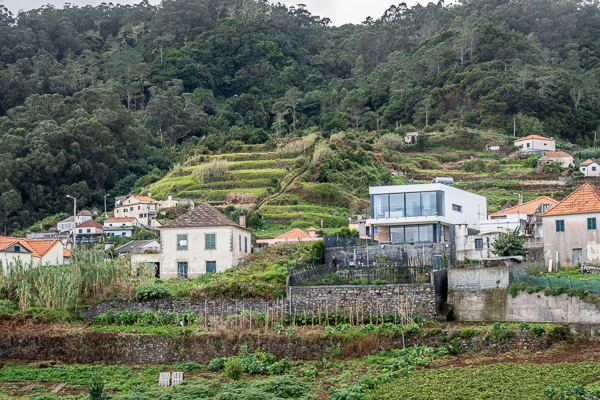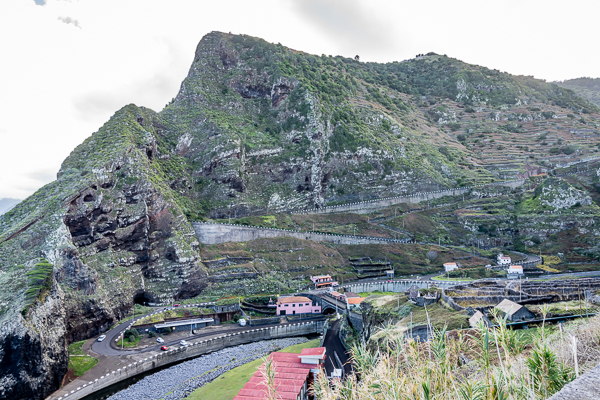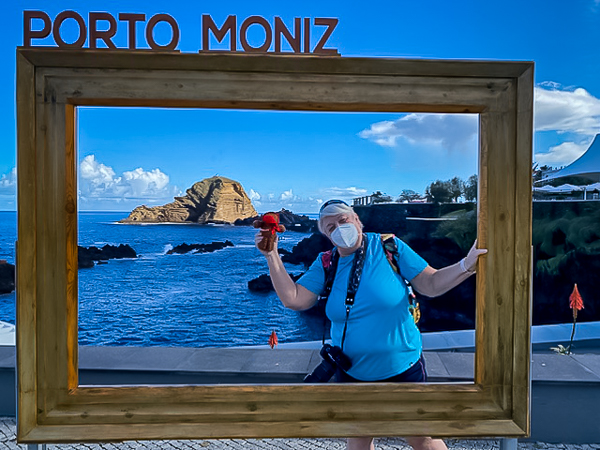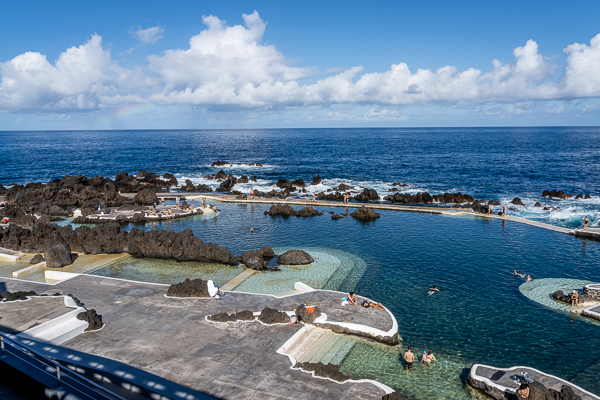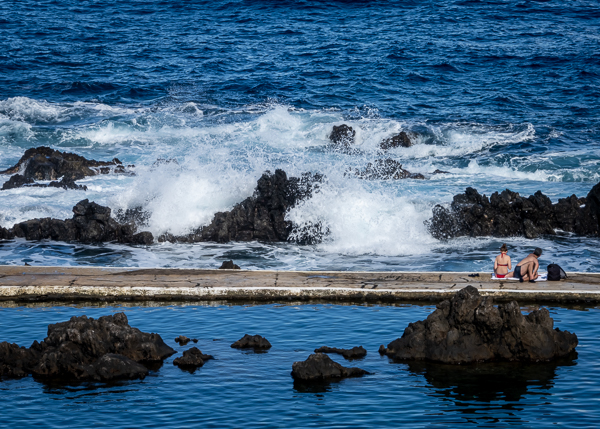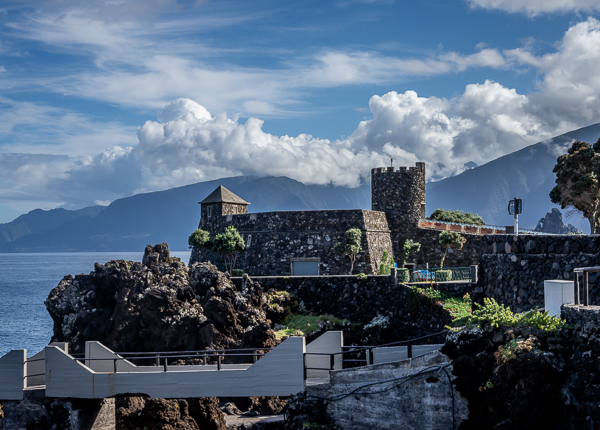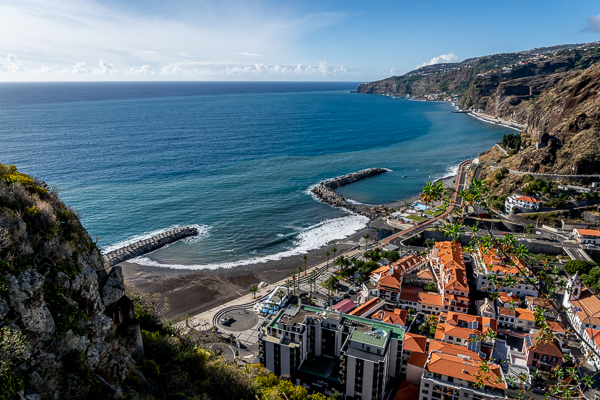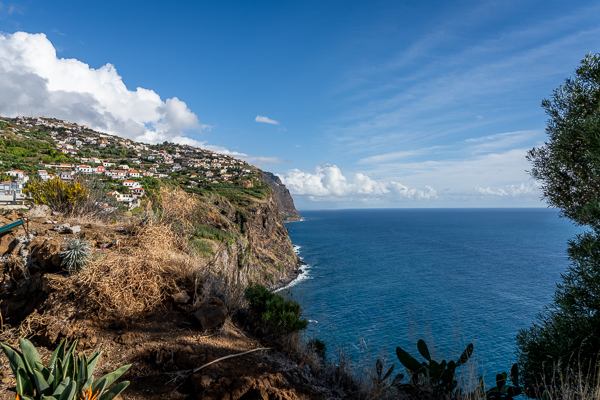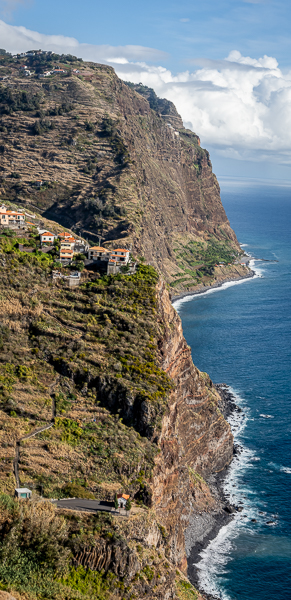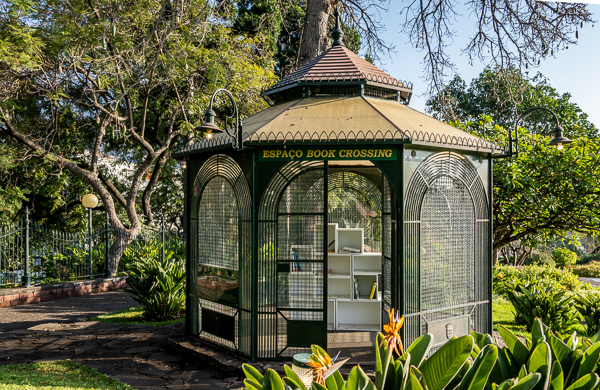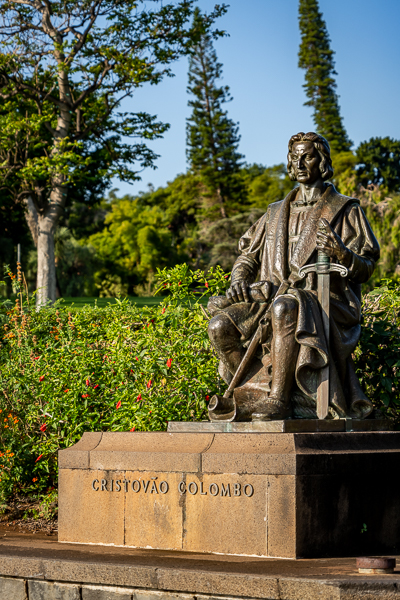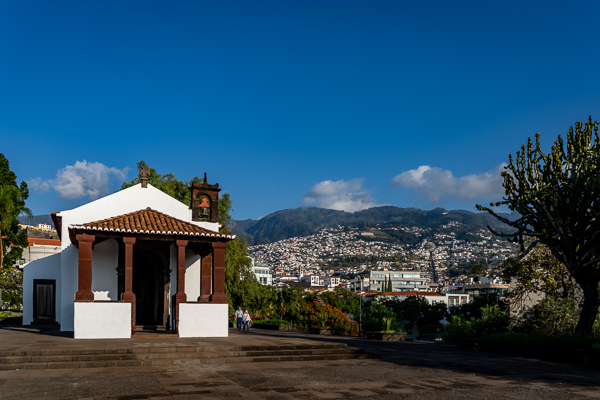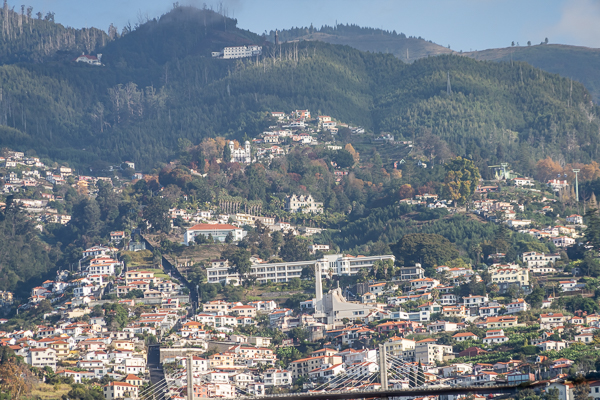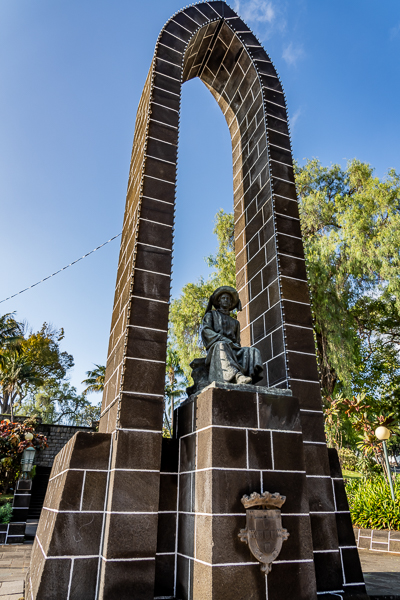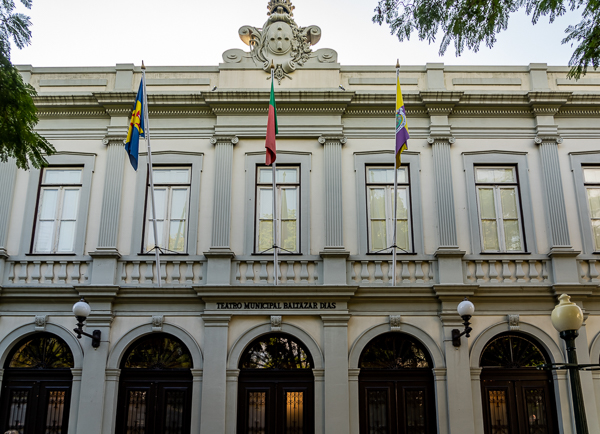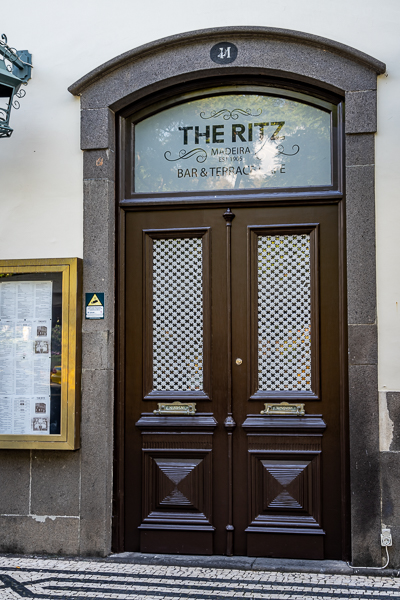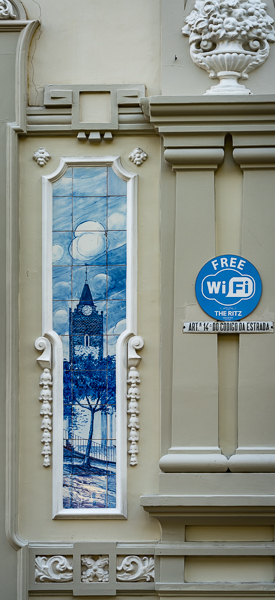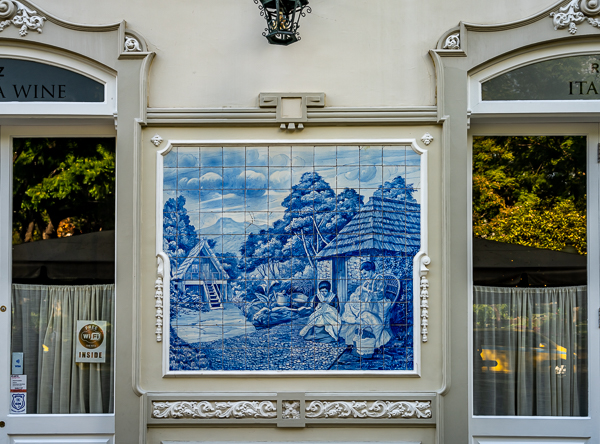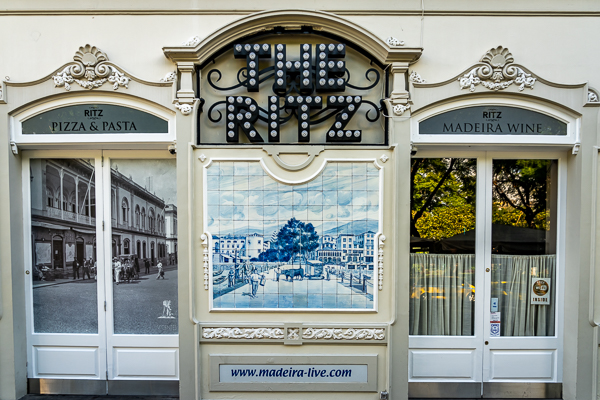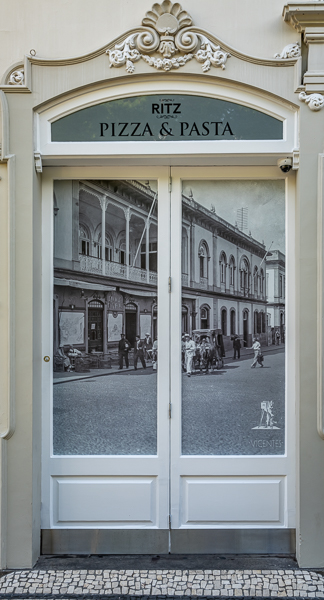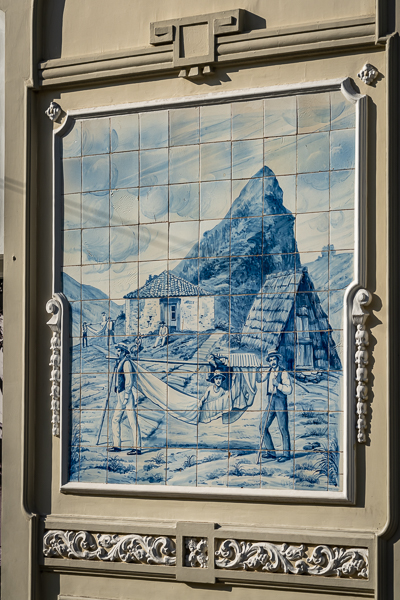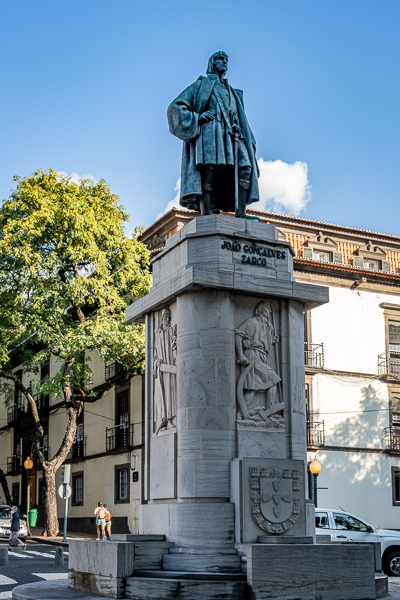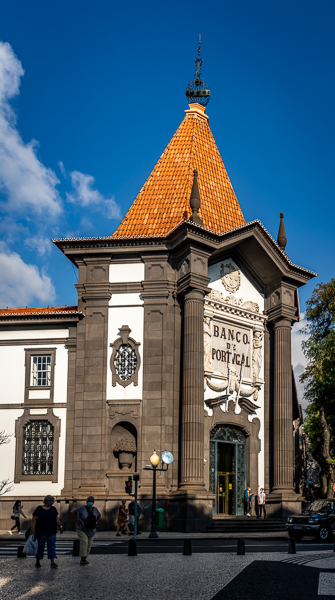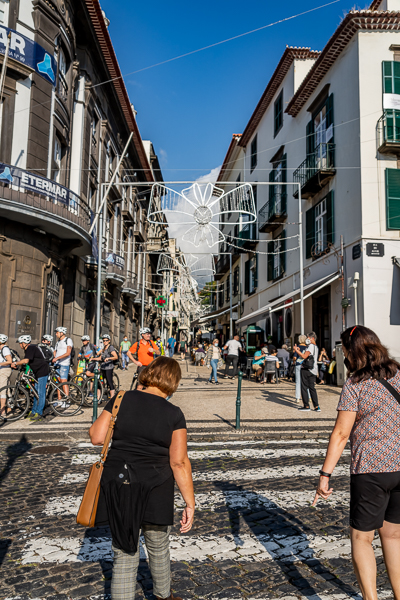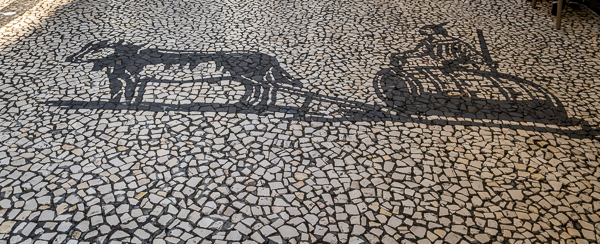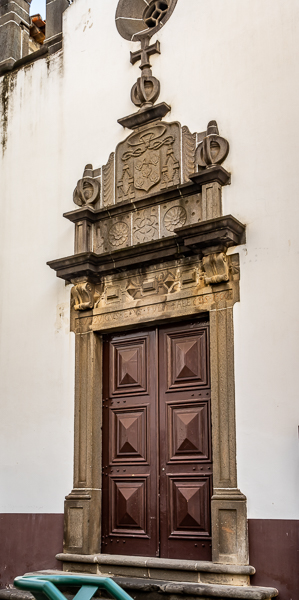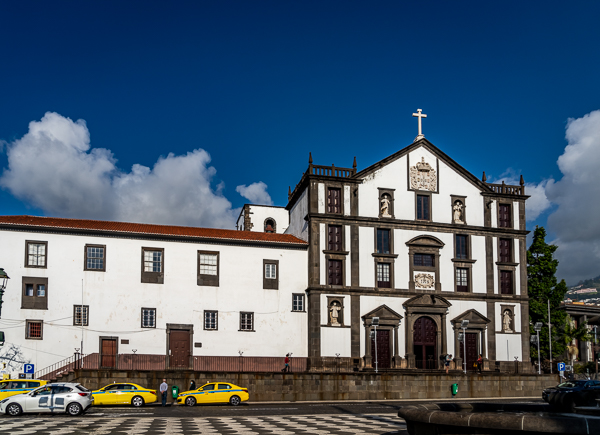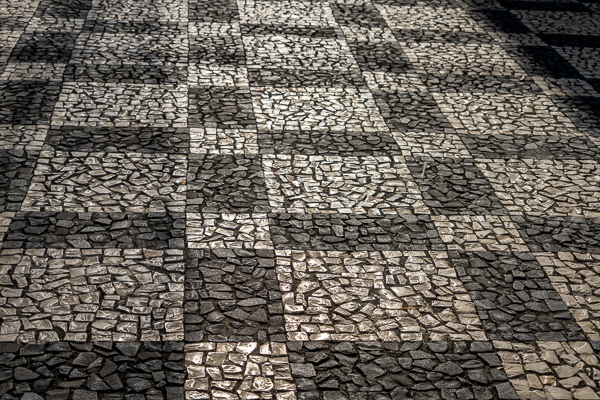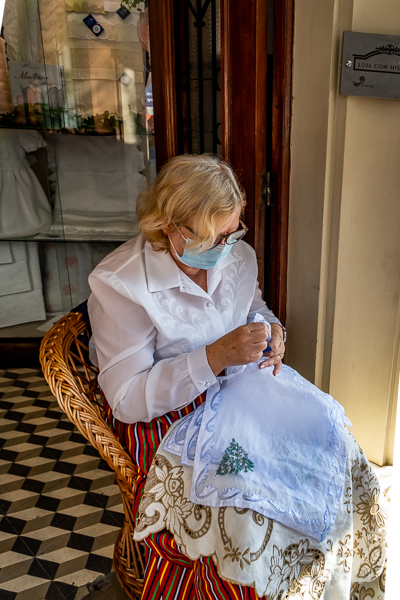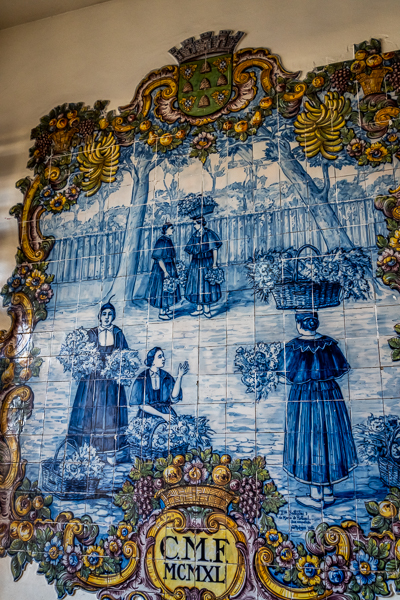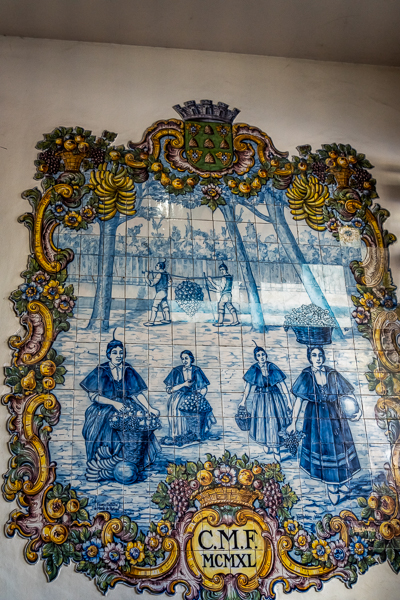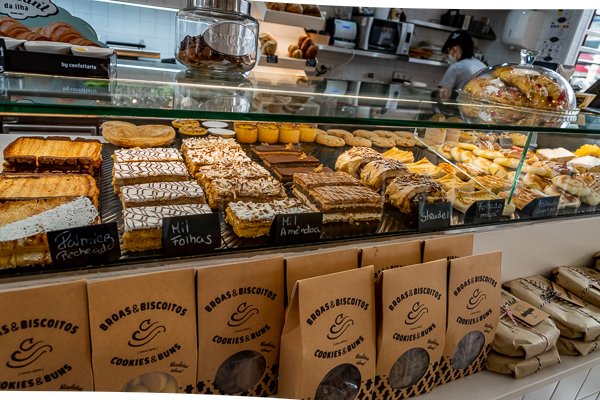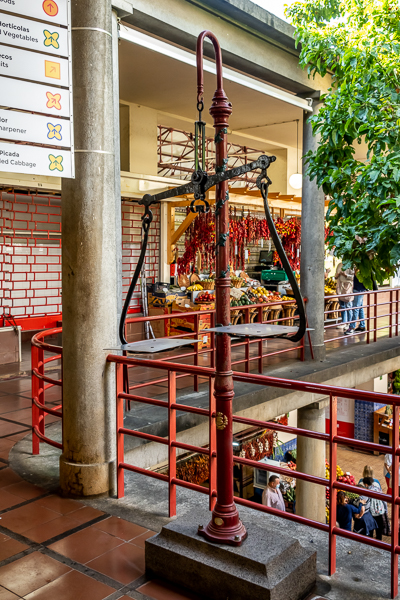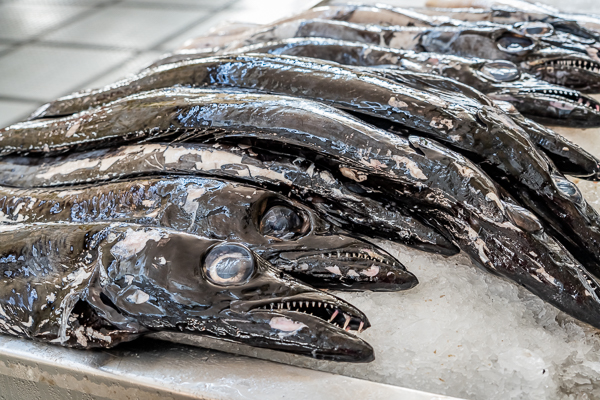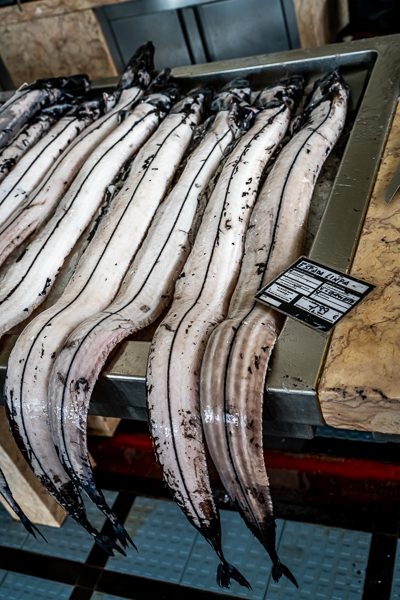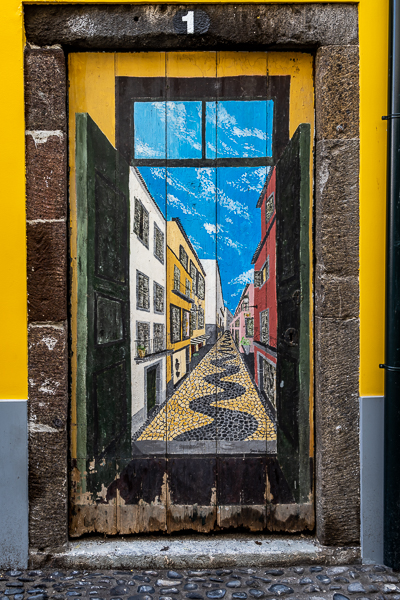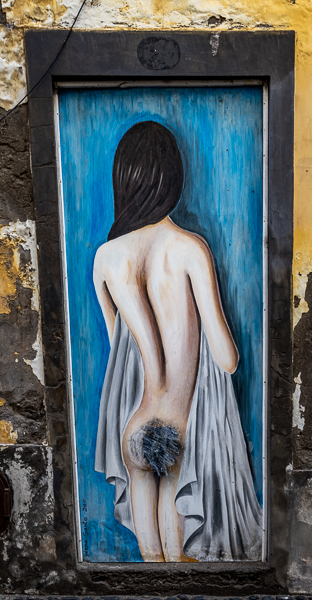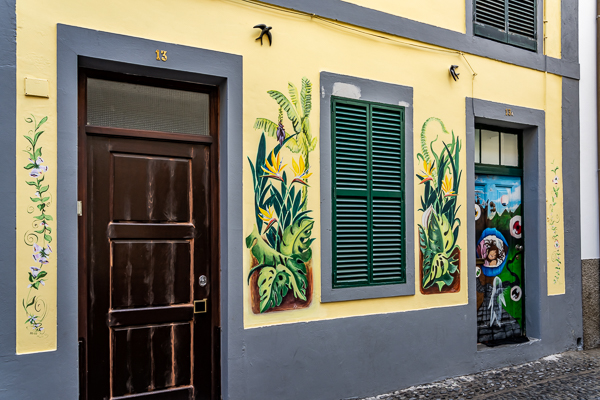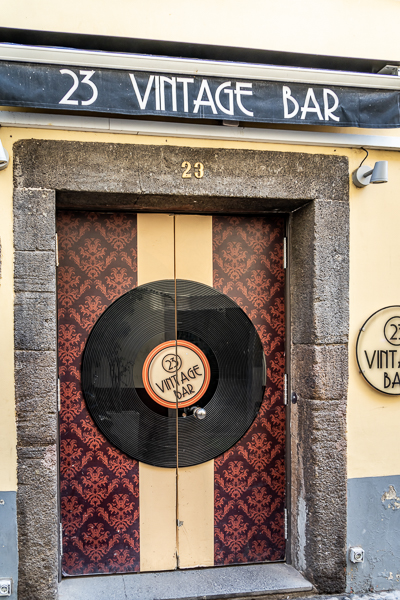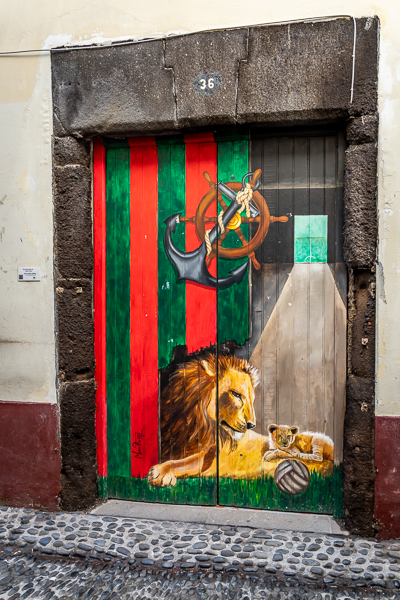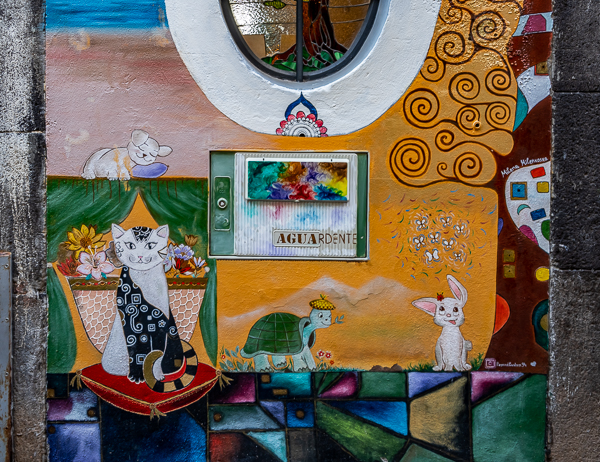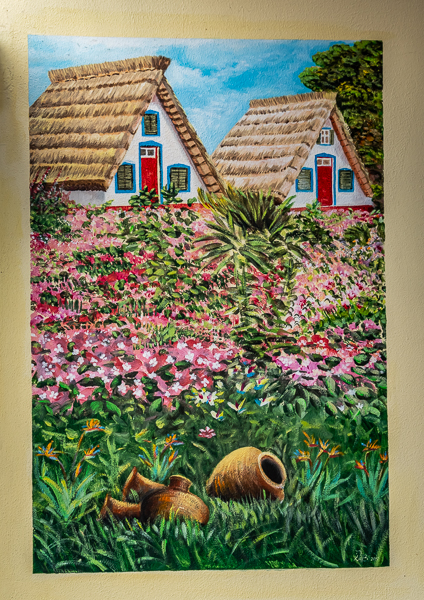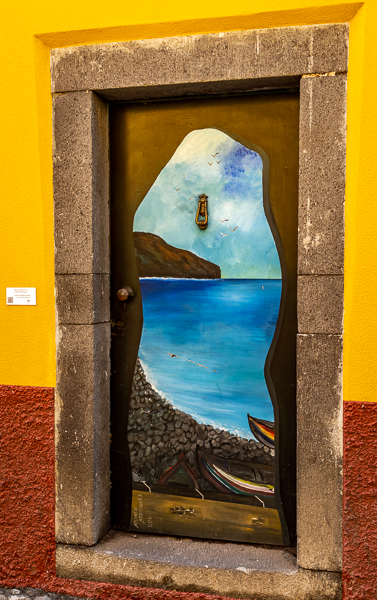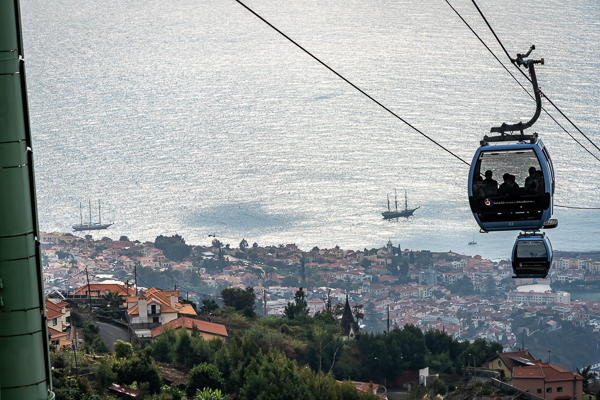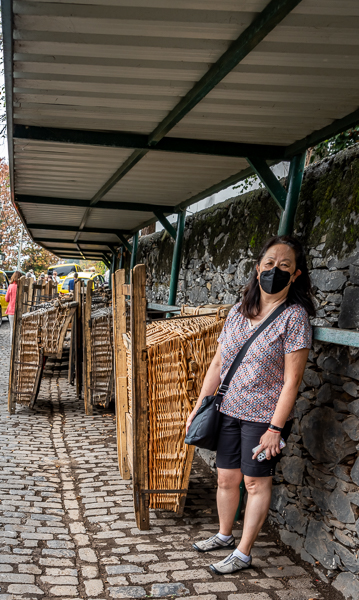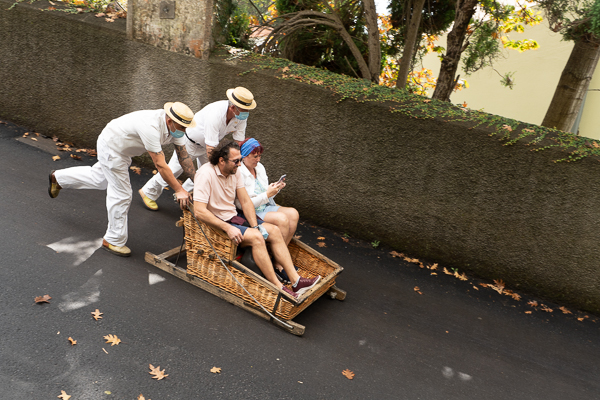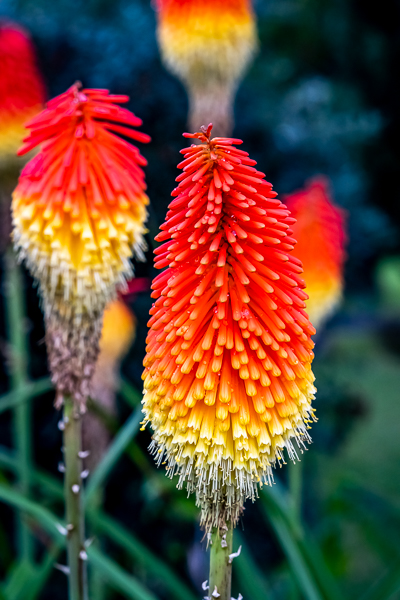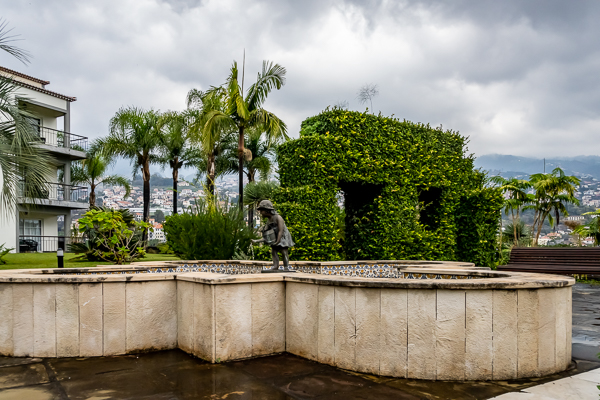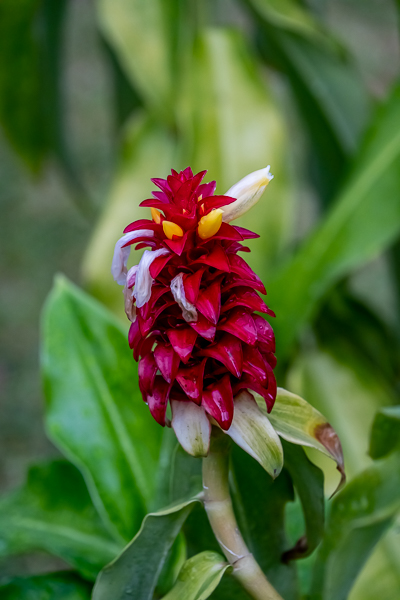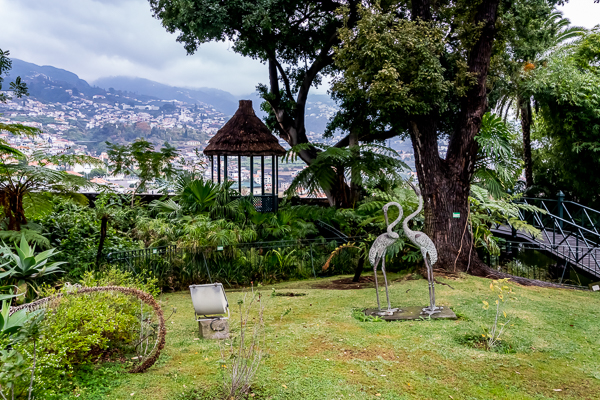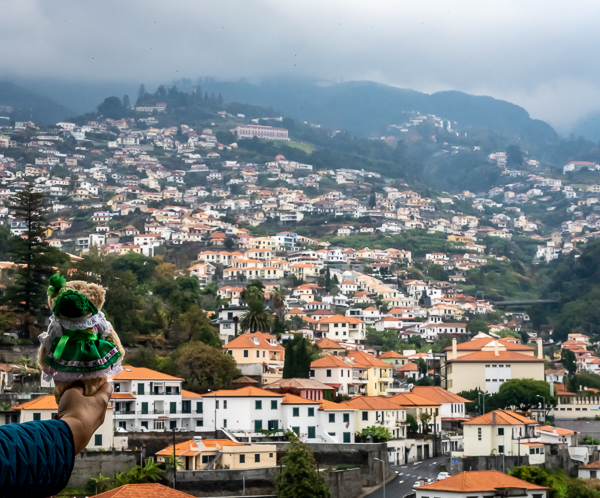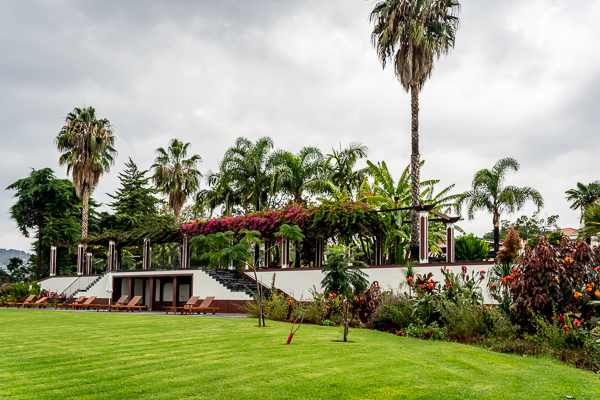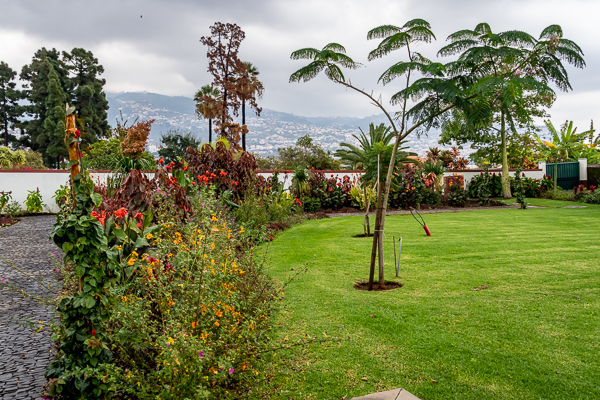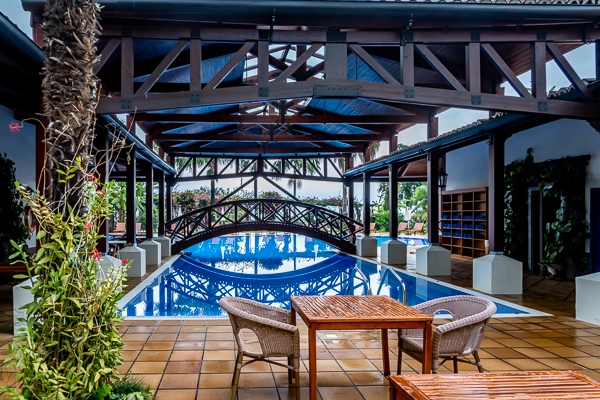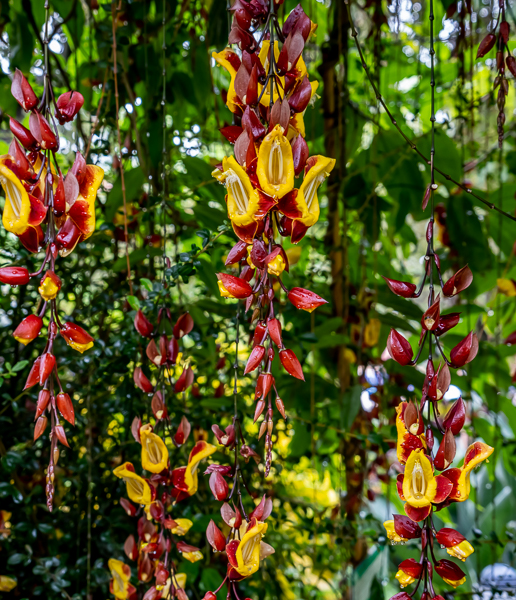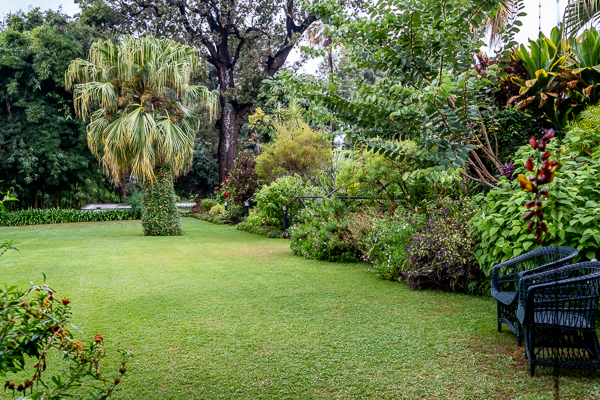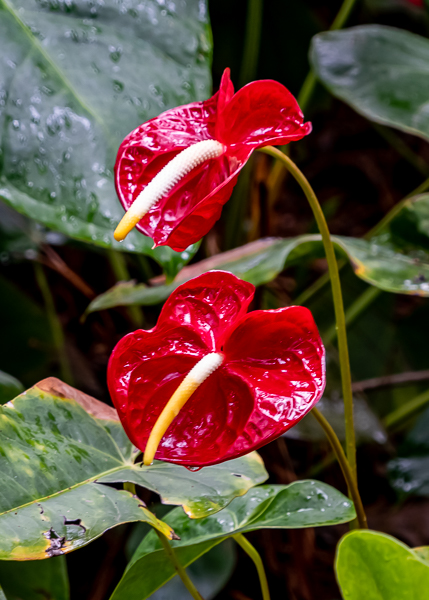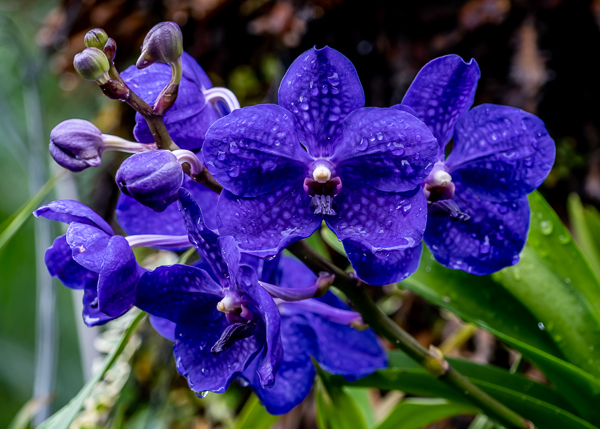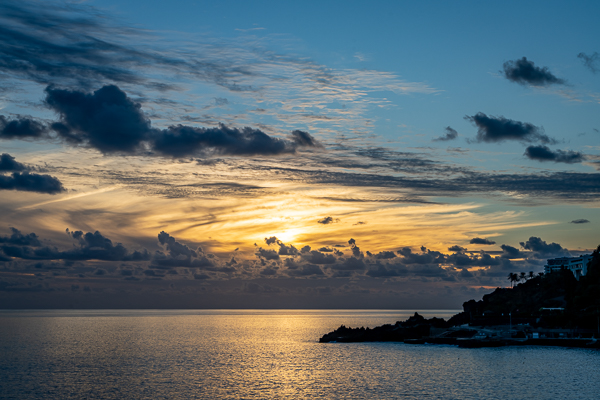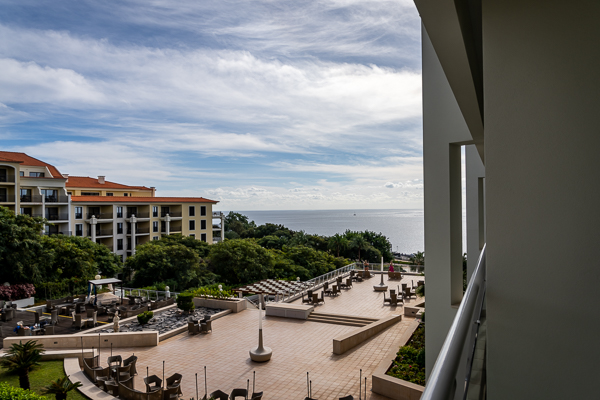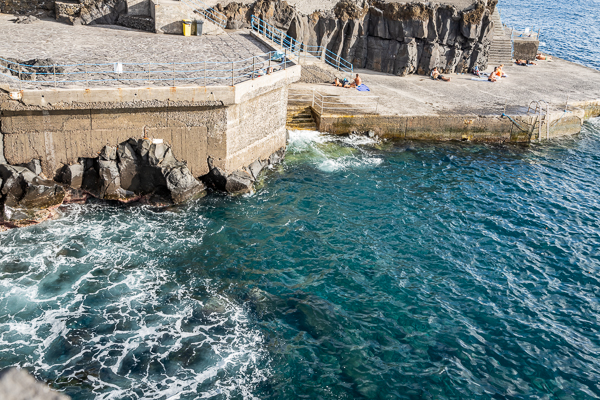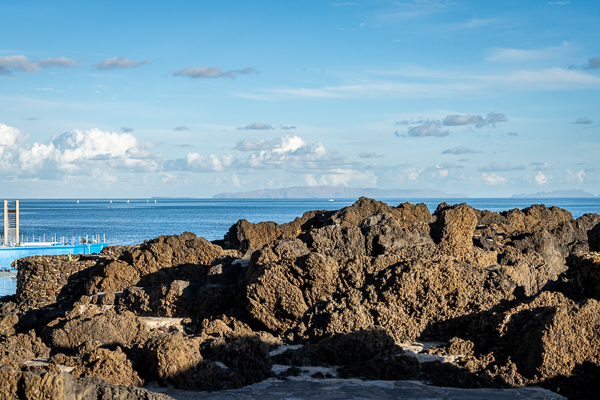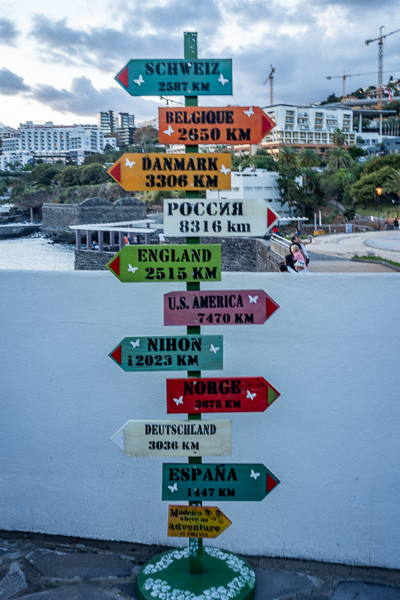This is the last post for this trip. Waah! I didn’t mention that yesterday we had to go for our antigen test to get back to the USA. Our Grand Circle representative Maria, helped us schedule the test and then went with us. The issue was, we did not get our results. Without the email of the test results – you don’t get on the airplane. So we started our morning, after breakfast, by going with Maria back to the testing site to try to get our results. We did get the emails, and we could then go on with our last tour. It was a bit disconcerting Tuesday night, as we were at a loss as to what we might have to do. But all was resolved. Whew!
Today, Gloria and I took the last optional tour through Grand Circle – to the East side of Madeira. We were fortunate to get the same driver / tour guide as yesterday.

We made a stop at Santa Cruz. This is where our driver used to go the beach. So why am I showing you a cable car? Because there is very little parking at the bottom – where the beach is located.


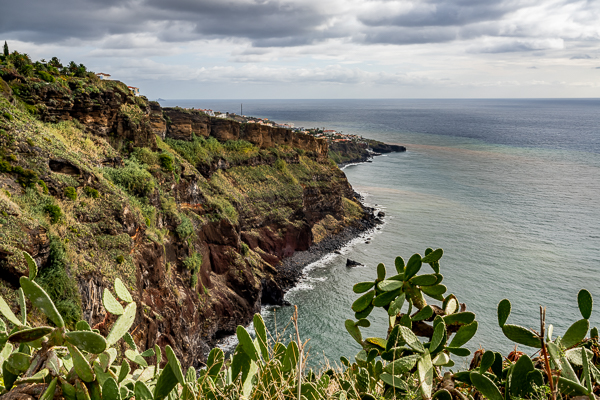


The Cristo Rei monument is a sacred statue of Jesus Christ on Ponta do Garajau, a headland between Caniço and Funchal on the south coast of Madeira Island. This viewpoint offers panoramic views on the Atlantic Ocean, Funchal Bay and Desertas Islands. The majestic statue stands on top of a hill which drops into the ocean. There are stairs going down the hill towards a lower platform overlooking the ocean from closer by. I did not walk down those stairs – way too many for my knees at this point on the trip.
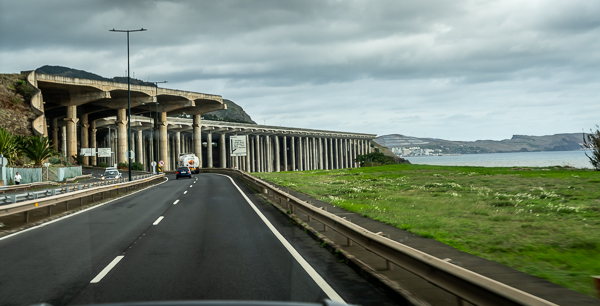



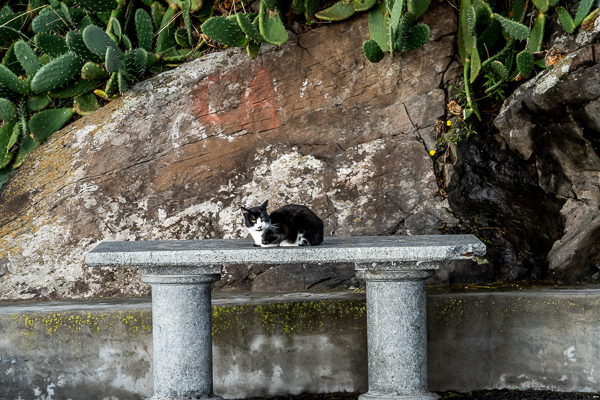

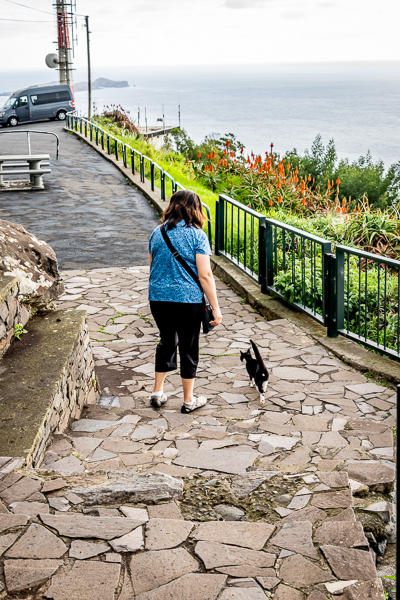
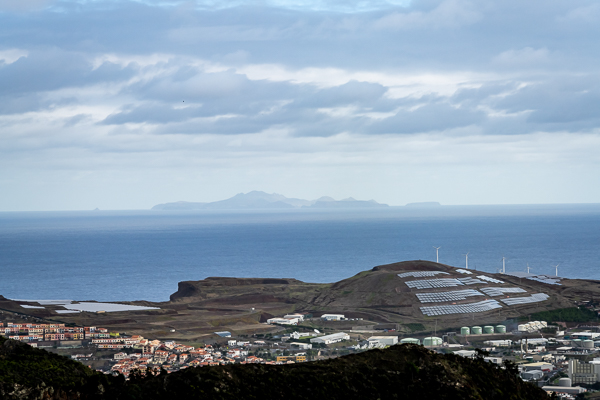







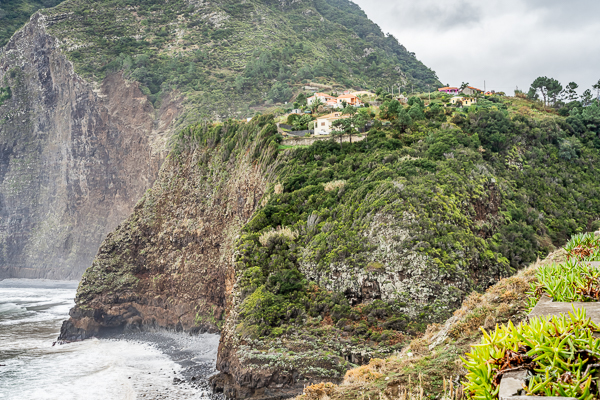
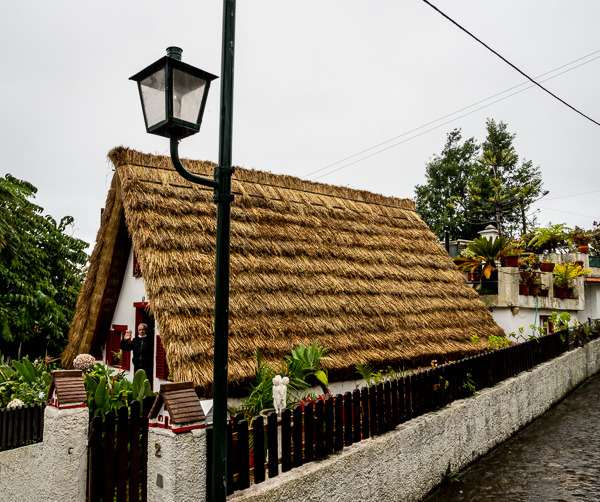
The style of architecture of palheiros houses is thought to have been brought to Madeira by settlers from the rural mainland of Portugal in the 16th century, in particular from the Minho region, in the very northwest of the country. Corn is often left to dry on the thatch and corn is also a typical crop farmed in the Minho.
The houses are built completely from locally-sourced materials – the straw was grown for the thatched roofs, the wood cut from nearby forests. The steep angle of the roofs allowed any rainfall to quickly drain away.
Inside the top floor was often used for drying and storing agricultural products (such as seeds) while the ground floor was the living space. The top floor is accessed via an internal trap door usually or by a ladder on the outside. Kitchens were usually in separate buildings.
The area is known for its ravines and waterfalls from which grazing cattle are liable to fall, so they were kept close to the houses and sheltered by the steep eaves of the roof of the house.
The straw thatch is replaced approximately once every five years or so.
Madeirans no longer live in small triangular houses as shown in postcards but you can still find a few ones in Santana. As a tourist, you will enjoy a small village of restored houses now used as shops and the tourism office of Santana.



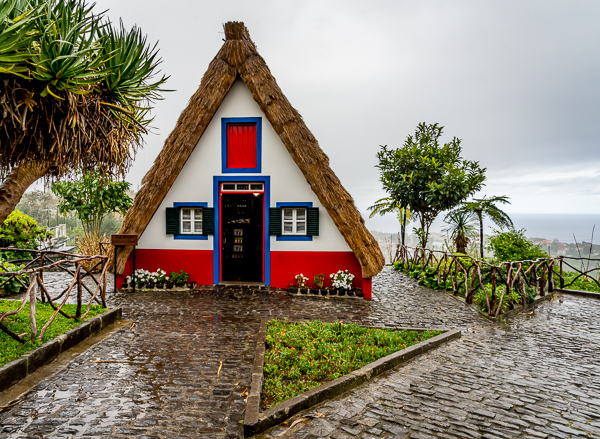


Since it was raining during our visit to Santana, we didn’t explore. We decided to go to a cafe and have some lunch. I ordered a tomato soup which they serve with a cooked egg in the soup. Interesting but not to my taste.
Our driver took us to Pico do Areeiro, but it was raining and it was in the cloud. Oh views not seen.
Pico do Areeiro, at 5,965 ft high, is Madeira Island’s third highest peak. Most days, visitors can stand and look down on the clouds. The air is fresh and clear and the sun is very bright. On a clear day it is possible to see the neighboring island of Porto Santo, 30 miles to the northeast – so they tell me.
The footpath northwards towards Pico Ruivo is an important tourist attraction, with a daily average of 1000 tourists trekking on it.
There is easy road access to the summit, with a large car park, a restaurant and souvenir shop. In 2011, an Air Defense Radar Station of the Portuguese Air Force was built at the top of the mountain near the tourist facilities.
We then drove to a trout farm at Ribeiro Frio, Machico. Since it was still raining a bit, I was afraid of slipping, so Gloria got out and walked to view the trout farm.
Not far from Santo da Serra, on the northern slopes of the island, you will find a very popular starting point for levada walks. Ribeiro Frio (cold river) still has much of the original vegetation today. The island was once totally covered with “Laurissilva forest”, a relic from prehistoric times.
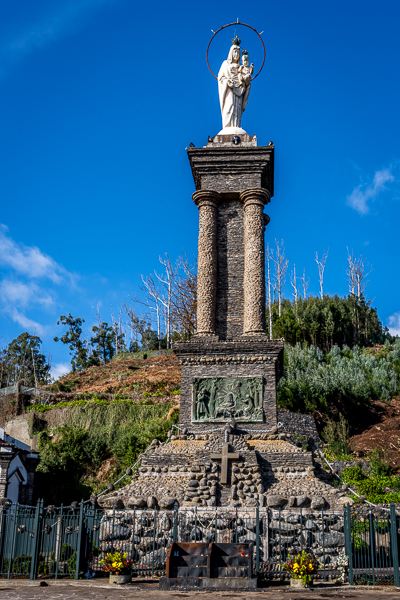
Terreiro da Luta is located north of Monte and the area was once the last stop on the only cog railway Monte Railway. It is also where the Our Lady of Peace sanctuary is located.
The Our Lady of Peace sanctuary statue which is supported by 4 roman columns. It was built after the attacks on Madeira during world war 1, which were first felt in Madeira on December 3, 1916 when the German U-boat U-38 went into the Port of Funchal and torpedoed and sank 3 ships, CS Dacia, SS Kanguroo and Surprise. The commander of the French Gunboat Surprise and 34 of her crew, 7 of which were Portuguese, died in the attack. The Dacia, a British cable laying vessel, had previously undertaken war work off the coast of Casablanca and Dakar, was in the process of diverting the South American cable into Brest, France. Following the attack on the ships, the Germans proceeded to bombard Funchal for two hours from a range of about 2 miles. Batteries on Madeira returned fire and eventually forced the Germans to withdraw.
In 1917 on December 12, two German U-boats, U-156 and U-157 again bombarded Funchal. This time the attack lasted around 30 minutes. Forty, 4.7 inch and 5.9 inch shells were fired. There were 3 fatalities and 17 wounded, In addition, a number of houses and Santa Clara church were hit.
A priest José Marques Jardim, promised in 1917 to build a monument should peace ever return to Madeira. In 1927 at Terreiro da Luta he built a statue of Our Lady of Peace commemorating the end of the WWI. It incorporates the anchor chains from the sunken ships from Madeira on December 3, 1916 and is over 16.4 feet.


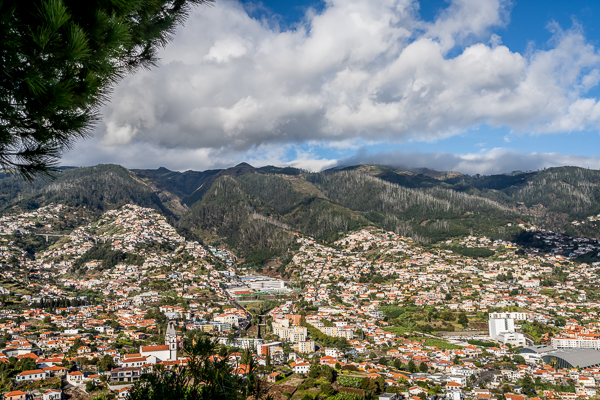



And now it was time to go back to our hotel. We met up with Maria for a good bye drink and a small bite to eat. I tried one last time for a Madeira sunset but it was not to be – again. Though I can’t complain as our 23 day trip only had 1 day where it rained in the morning (Madeira) but cleared up for the afternoon and this our last day it rained a bit in Santana and up in the mountain. If you had seen the weather forecast for Barcelona and the entire week in Madeira, it would have given you the feeling why am I here. But, the rain didn’t come and we were just fine. So just a little bit near the end of our trip is nothing. We were so grateful.
On Thanksgiving morning (well in Madeira it was 2 AM) we started our journey home. First flight to Lisbon, then a wait until our flight to Newark, NJ, and then separate flights to our homes. It would be a good 24 hours that we would be up getting home. But we both made it home safely and reasonably on-time.
I am so glad that we added Madeira to our trip. It was well worth the time to come out to this island. We experienced new food – Black Scabbard fish, Limpets and beef steak sandwich. We slid down the road in a basically a loveseat on skids, took a funicular up the mountain, had afternoon tea, and walked the gardens on the side of a mountain and saw fantastic views (only wish I had more time to go back to some places and take the photos during the right time of day for photography – ok I’ll stop whining).
Add to the new food we had in Spain and Portugal – Bacalao (dried, salted cod), Jamon, Hot chocolate with churros (it is new – as this hot chocolate is soooo goooood), paella and octopus. And don’t forget the drinks – poncha, madeira wine, sangria, wines, and ginjinha. I’m sure I am leaving things off. lol but of course, Pastels de Belem. Don’t get me started on how wonderful they were. (Even the truck stop version of them. ) Did I have a good time – Heck Yeah. Would I recommend you go visit – Heck Yeah. And make sure you include Madeira.
As a side note – it looks like I might have used up all the space in this blog. I will be looking to have a update for where my next trips will post. Stay tuned.
Thanks for following. I hope this gives you a little insight in some wonderful places in this world to visit.


